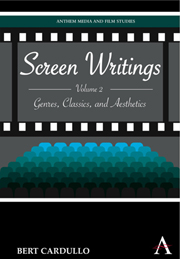Book contents
- Frontmatter
- Contents
- List of Illustrations
- Introduction: The Film of Value
- Part I Film Genres, Film Classics, and Film Aesthetics
- 1 Shooting the City: The Gangster, Manhattanites, and the Movies
- 2 Back to the Future, or the Vanguard Meets the Rearguard
- 3 Flags and Letters, Men and War
- 4 Farce, Dreams, and Desire: Some Like It Hot Re-viewed
- Interlude
- Part II Classification, Re-classification, and Assessment
- Bibliography of Related Criticism
- Index
- Plate section
2 - Back to the Future, or the Vanguard Meets the Rearguard
from Part I - Film Genres, Film Classics, and Film Aesthetics
Published online by Cambridge University Press: 05 March 2012
- Frontmatter
- Contents
- List of Illustrations
- Introduction: The Film of Value
- Part I Film Genres, Film Classics, and Film Aesthetics
- 1 Shooting the City: The Gangster, Manhattanites, and the Movies
- 2 Back to the Future, or the Vanguard Meets the Rearguard
- 3 Flags and Letters, Men and War
- 4 Farce, Dreams, and Desire: Some Like It Hot Re-viewed
- Interlude
- Part II Classification, Re-classification, and Assessment
- Bibliography of Related Criticism
- Index
- Plate section
Summary
A recurrent motif in the history of avant-garde film is the idea that the medium need not have become a narrative, representational form at all, but could instead have modeled itself on other art forms, especially painting and music. A history of avant-garde cinema can in fact be constructed in just such terms, counterpoising the origins of orthodox or mainstream narrative film in literature and theater with the painterly, poetic, and musical origins of the first avant-garde experiments on celluloid. In doing so, one would be elaborating a gesture made much earlier by, among others, Fernand Léger, Germaine Dulac, Maya Deren, and the art historian Élie Faure, who said that “there will some day be an end of the cinema considered as an offshoot of the theater, an end of the sentimental monkey tricks and gesticulations of gentlemen with blue chins and rickety legs.”
The most extreme statement of this “anti-narrative” sentiment may be found in the work of the “structuralist-materialist” filmmakers of the 1960s and 1970s such as Michael Snow, Ernie Gehr, and Paul Sharits (themselves preceded by the “absolute film” of Hans Richter, Viking Eggeling, and Oskar Fischinger). They emptied their motion pictures of apparent content in order to draw attention to the functioning of a particular aspect of cinematic technique, or to emphasize film as concrete material rather than as a medium for imitating actions and conveying emotions.
- Type
- Chapter
- Information
- Screen WritingsGenres, Classics, and Aesthetics, pp. 23 - 48Publisher: Anthem PressPrint publication year: 2010



